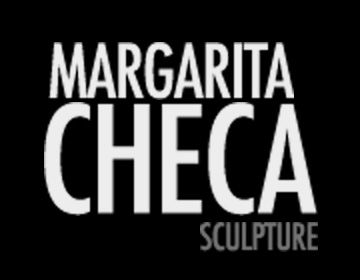Four female sculptors – four regions – four media
MoLAA exhibits how quartet of female sculptors have made their marks on the art world
By Phillip Zonkel
Staff writer
CLAY. GLASS. PAPER. WOOD. Not exactly conventional sculpting materials, but they are the media of choice for four Latin-American female artists — Margarita Checa, Isabel de Obaldia, Susana Espinosa and Patricia Waisburd — whose work is on display at the Museum of Latin American Art in Long Beach.
“A Woman’s Touch,” opening Saturday, examines how these artists sculpture the human figure in a variety of forms and work with materials not traditionally associated with sculpture.
The exhibit, three years in the making, is the museum’s first to feature female sculptors. The four women represent the four regions that make up Latin America: Checa is from Peru (South America), de Obaldia is from Panama (Central America), Espinosa is from Puerto Rico (the Caribbean) and Waisburd is from Mexico (North America).
“Traditionally, Latin American women were not recognized as artists and were denied the opportunity to work with materials such as bronze or marble,” ‘ says MoLAA director Gregorio Luke. “Their creativity was limited to what was considered ‘minor” arts — pottery, knitting and even cooking — and such materials as clay, glass, paper and wood.”
Adds Idurre Alonso, MoLAA associate curator: “The traditional role of women, devoted to family and domestic duties, prevented their entrance into the art world until almost the middle of the 20th century. Two exceptions were Mexican painters Maria Izquierdo, who had her first solo exhibition in 1929, and Frida Kahlo, who had hers in 1938.”
The greatest change, she said, “occurred in the 1960s with the creation of new artistic movements and techniques characterized by their anti-Classicism, such as body art and photo collages, which gave women access to untapped artistic territories not associated with male artists.” ‘
Here, the four artists talk about their art, its influences and significance.
MARAGARITA CHECA
Checa yearns for something more in her art.
“I’m lonesome for myth. Before, we had all the myths,” says the 54-year-old Peruvian artist. “We need to go beyond our own life to touch other people with our work. Personal items are worthless. It’s the other stuff, the unconscious collective, that is inside everybody what is important.”
Putting her belief into art, Checa carves life-size wood sculptures, usually from olive trees, that deal with inner thoughts and emotions. Reflecting influences of Pre-Hispanic art, her sculptures are connected to the mummies, masks and sculptures of two Peruvian cultures: the Chancay (600 B.C.) and the Paracas (A.D. 150).
The faces may look melancholy or full of despair, but Checa says, look again.
“I have always been told that my works are sad,” she says. “I don’t consider them sad; they look inside themselves and look out at the same time. They are not laughing but they are not sad either. It is as if they are meditating.”
Born in Lima, Peru, where she still lives, Checa studied at the School of Art of the Universidad Catolica of Peru with Ana Maccagno, master sculptor and mentor to many prominent Peruvian sculptors.
Checa’s career started with bronze sculptures, but the material was too expensive. Wood became her medium of choice in 1989. After living in Costa Rica from 1992 to 1995, Checa found a purer technique in woodcarving and started to create works in wood that contained inlaid metal.
She also discovered something else.
“While I’ve been working all these years, I found out that wood is sensitive material. It changes with time and weather,” Checa says. “I submit to her more than she submits to me,” she chuckles.
Checa says it also touches her in a profound way.
“In the center of my hand, you can touch everything. It’s the sensitive part,” she says. “Sometimes I feel I will be able to feel the beating of life.”
“A WOMAN’S TOUCH”
What: The Sculptures of Margarita Checa, Isabel de Obaldia, Susana Espinosa and Patricia Waisburd
Where: Museum of Latin American Art, 628 Alamitos Ave., Long Beach
When: Opens Saturday. Hours are 11 a.m.-7 p.m. Tuesday-Saturday, 11 a.m.-6 p.m. Sunday; through May 30 (Artists’ reception and lecture 1-3 p.m. Saturday.)
Admission: $5 adults, $3 seniors and students, free for children under 12 and free for everyone on Fridays
Information: (562) 437-1689 or www.molaa.com
Back